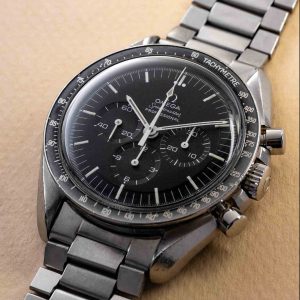The myth of un-polished watches

The myth: polished watches should be avoided.
By Thomas van Straaten on 10 March 2020
Debunking an internet myth about polishing
The rise of the internet has been a massive blessing for watch collectors. Never before has information been so readily available. Anyone can learn all about the history and technology of watches from the comfort of home.
The democratization of information does come with some pitfalls though, as misinformation can spread as easily as the truth. Every now and then, we find such a misunderstanding among visitors to our store coming back again and again. So then what? We dedicate an article to it!
"A natural tendency would be to proclaim: ‘polished watches are bad!’..."
The myth: polished watches should be avoided
The particular bit of misinformation we are talking about here regards the practice of polishing watch cases. While many of the more established blogs are quite nuanced about the subject, particularly on Youtube and some fora, there are false conceptions to be found. In short, the myth is as follows: polished watches are to be avoided at all times.
Images below: this is a clear example of over-polishing. The lugs are thin and uneven, the fluted bezel has lost its sharp pattern.
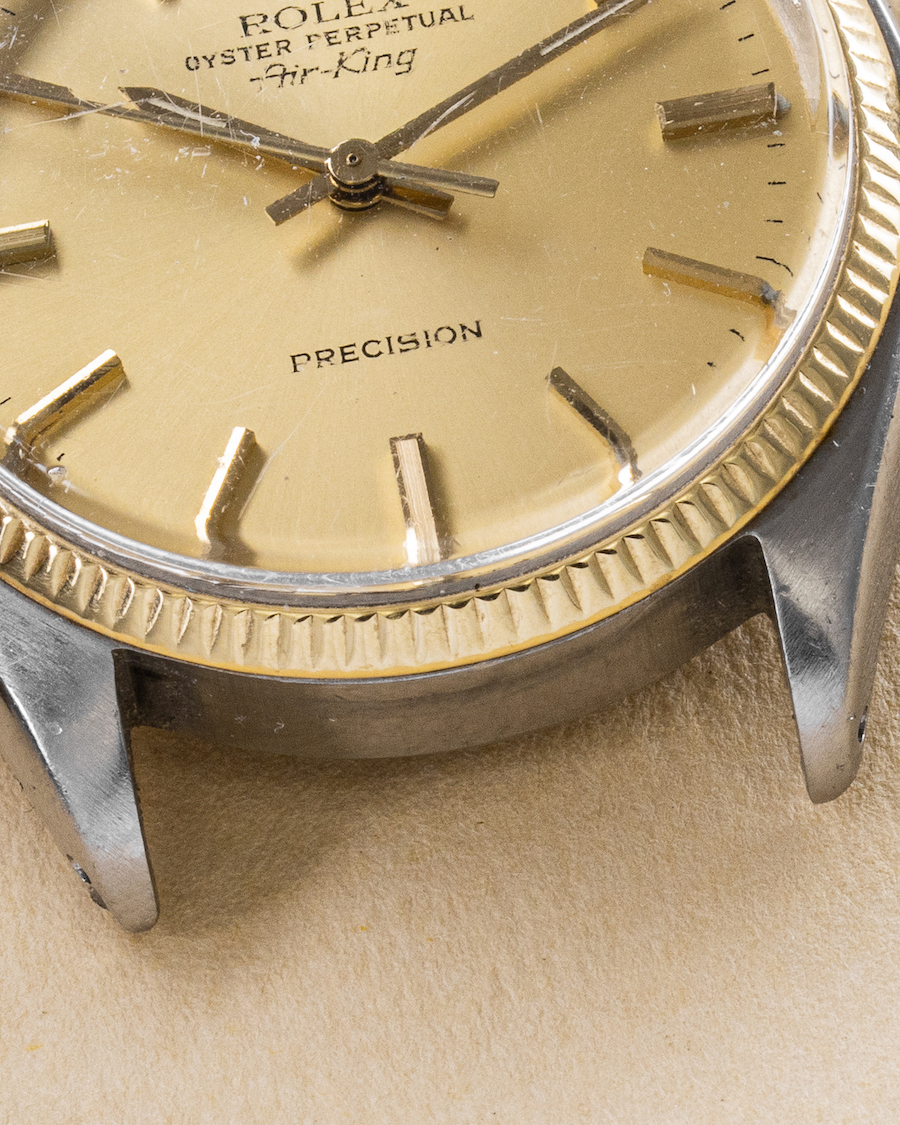
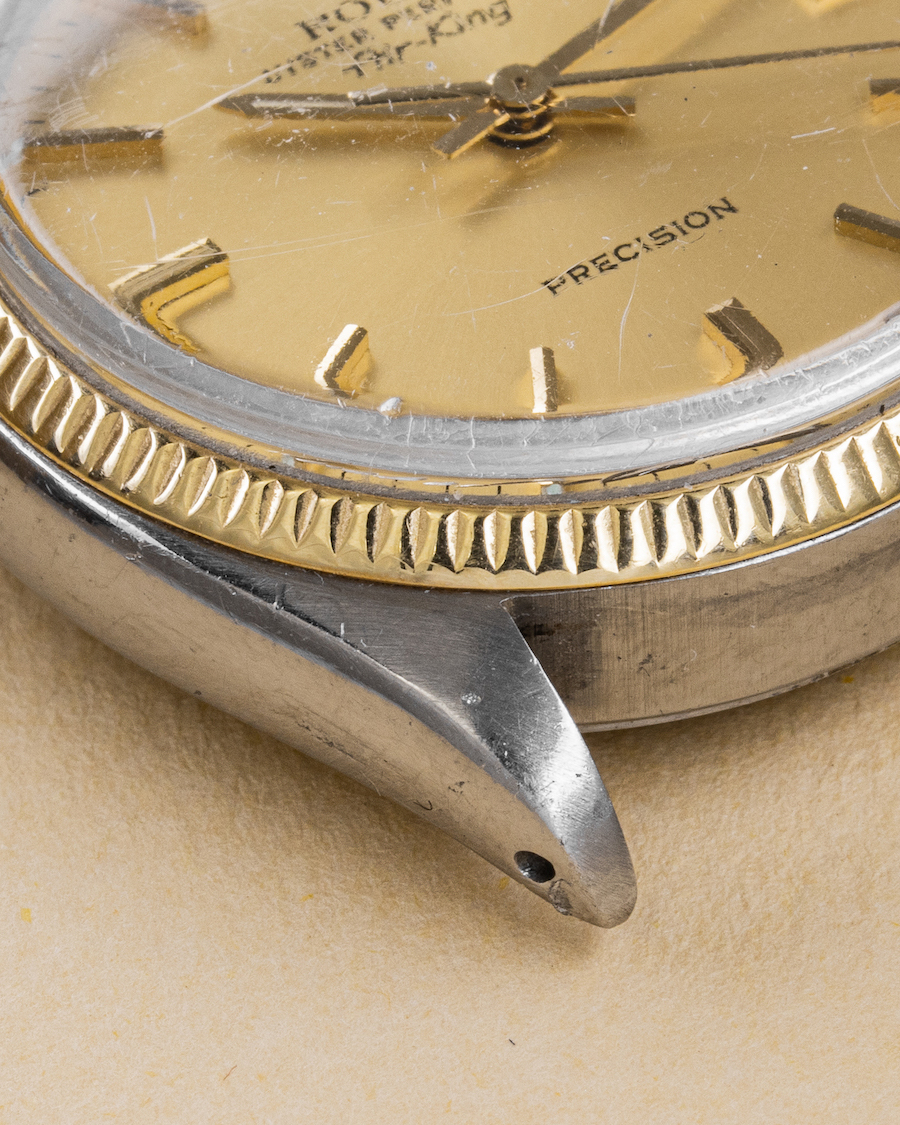
Where does the myth come from?
Browsing vintage and young-timer watches on the web will yield a large number of watches that have been over-polished or polished badly. You will find misshaped cases, uneven lugs, un-matching wear, rounded lines and wrong surface finishes (for example, fully mirror-polished watches that originally had brushed surfaces as well). These issues can seriously hurt a watch’s visual appeal, collectability and as a result: value.
A natural tendency would be to proclaim: ‘polished watches are bad!’. And this is exactly what many vloggers and forum members say. We find that many of our visitors come in with this notion as well, likely as a result of reading or hearing these influencers.
On the other hand, high end collectors started referring to some watches as un-polished from roughly 2010 onward. By un-polished they would mean “barn find” watches that have never been worn or serviced. To these collectors, such watches are attractive as nobody has ever messed with them. They are collected not to be worn, as they obviously cannot be serviced without loosing their un-touched nature.
Combining what people see in terms of bad polishing with a superficial understanding of what these high end collectors are into, we see the rise of a myth: polished watches are bad.
"...we hardly ever come across one that is unpolished."
Why is it untrue?
For starters: un-polished watches are exceedingly rare. We handle hundreds of watches every month, yet we hardly ever come across one that is unpolished.
Images below: These two watches are truly un-polished. Both show some wear from the minimal use they have seen.

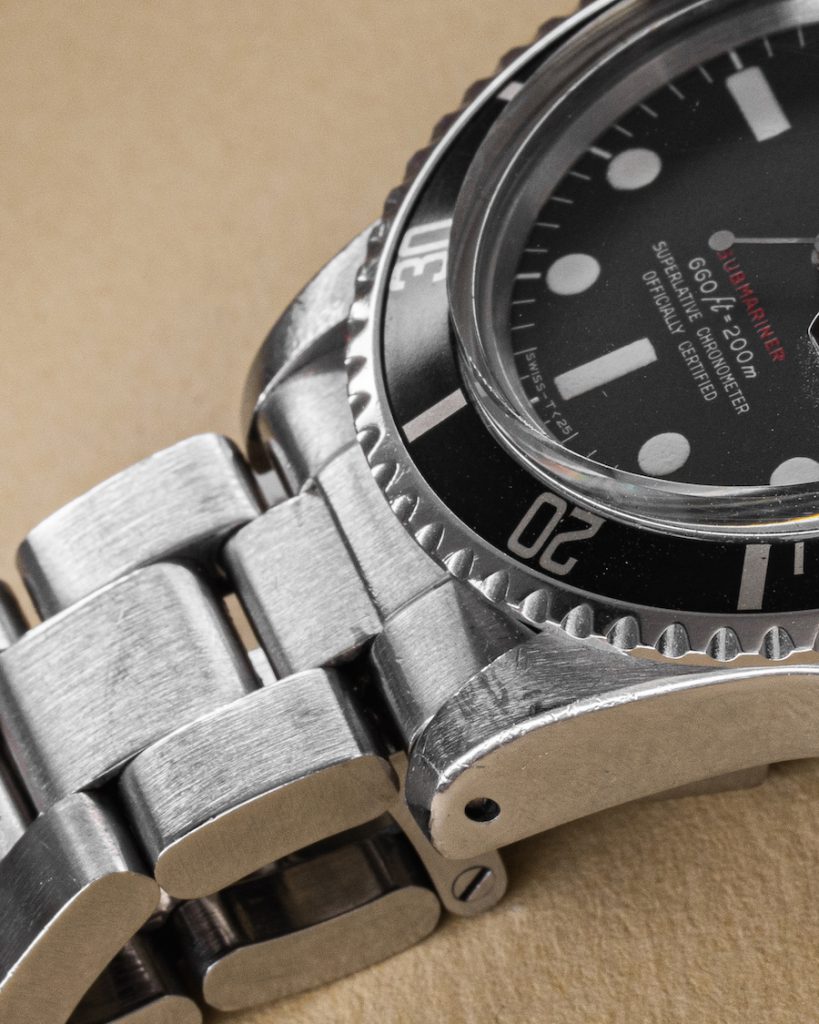
How come?
Treating watches as collectible museum pieces is a relatively young phenomenon. We, as AWCo, are huge fans of originality and historical accuracy. But this is not how most watches have been treated throughout their existence.
Over the decades, brands like Rolex and Omega cared for one thing only: to put out functioning time-telling tools. These brands would service watches to make them work and look neat, without bothering too much with periodical accuracy or purism. So if a watch came in with a scratch, they would polish it. If a handset was damaged, they would replace it. No questions asked. And for decades, no customer ever complained about having a scratch removed or about hands being period-incorrect. They were happy to see their watch shining brightly once more.
It is safe to assume, therefore, that whenever you are buying a 50-year-old watch, it has probably been polished at least five or six times, simply because it has likely been serviced about that many times. The only watches of that age that are unpolished, are the rare ones that have been hidden in a drawer or safe somewhere, without ever being worn. As a result, these untouched watches should never be serviced or worn in the future either. So if you are looking for a watch to wear, this is not your cup of tea.
So now what?
Don’t despair! We are not saying all your future watches will feature misshaped, over-polished cases. As is often the case, the reality is a lot more nuanced. In this case, there is over-polishing, and then there is skillful re-finishing by experienced craftsmen. Apples and oranges.
Shallow damage through normal wear can easily be removed by a skillful professional. With some care, a watch case and bracelet can be made to look like new, without taking off a significant layer of material. We are talking microns here, which will not hurt the shape of the case. The typically tough-to-get-right transitions between brushed and polished surfaces can also be re-done well.
It is only when serious damage has to be covered up or when a lesser craftsman performs a crude re-finishing, that the aforementioned nasty effects show up. And of course, any polishing process does take away some material in the end, so you cannot infinitely repeat it.
Just to clarify, here are the three main categories of vintage watches:
- Over-polished: Watches that have lost their shape, thickness and crispness due to wear and (repeated) poor polishing. Might be recently refinished or showing some wear.
- Un-polished: Super rare barn finds, to be enjoyed as objects in museum-like settings.
- Serviced. Watches that have been worn, serviced and therefore polished a few times with respect for the original lines, thickness and surfaces. Ready for continued wear and servicing. Might look as new or worn, depending on recency of latest service.
Images below: Watch cases refinished by skilled watchmakers. Look at the sharp lines, ample thickness of the lugs and clear separation of surfaces. In this case, the facet between the two surfaces has not been replicated, as these models feature thinner bevels than the ones above. These bevels could also have been recreated though, should the watchmaker have chosen to do so.
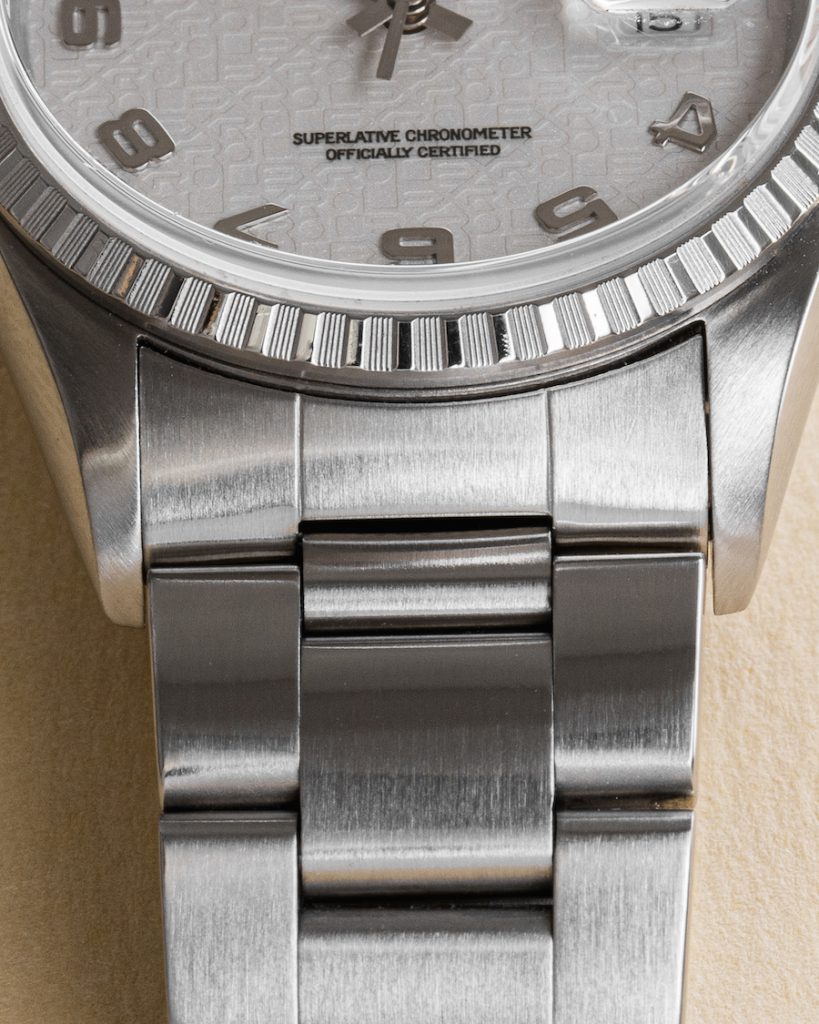
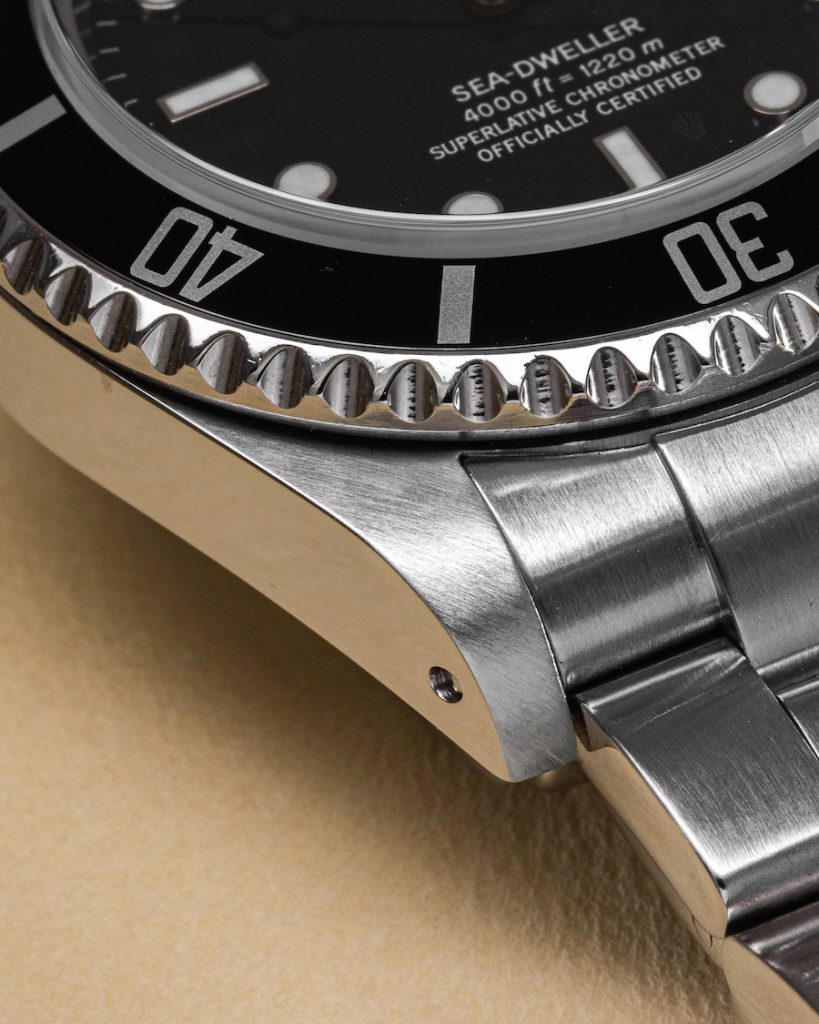
What to look for?
Let’s look at the practical implications when buying a watch. For 99,9% of buyers, an un-polished watch is not relevant at all. What you are looking for is a watch that has been properly taken care of. Have a look at the lines and transitions. Are they sharp, even and smooth? Look at the lugs, are they even in shape and thickness? Is there still enough meat around the push-pin holes? (These are often extremely close to the edge on over-polished watches).
If the answer is yes, the watch has been re-finished by a skillful professional. The watch will look great and you can feel secure about perhaps polishing it a couple more times in its lifetime.
Original damage.
An often-heard opinion in the blog-o-sphere is that a damaged, scratched case is preferable over a refinished one. While this is a matter of personal preference, it makes sense to consider the information above. You are most likely merely looking at the most recent layer of wear, on top of a prior polishing job. Not necessarily the often romanticized “complete history of the watch”. Of course a barn find un-polished watch can show some wear from its earliest years before disappearing in a safe or drawer. But this is rare.
The contradistinction is slightly misleading here. We would certainly agree that a watch showing wear is preferable over an over-polished one. But it is fine if you prefer a properly touched-up case over one that shows a lot of wear. There is a big difference. We find that the majority of people who visit our store prefer a watch that looks quite neat and that’s perfectly fine. Of course, some marks here and there, come with the vintage charm.
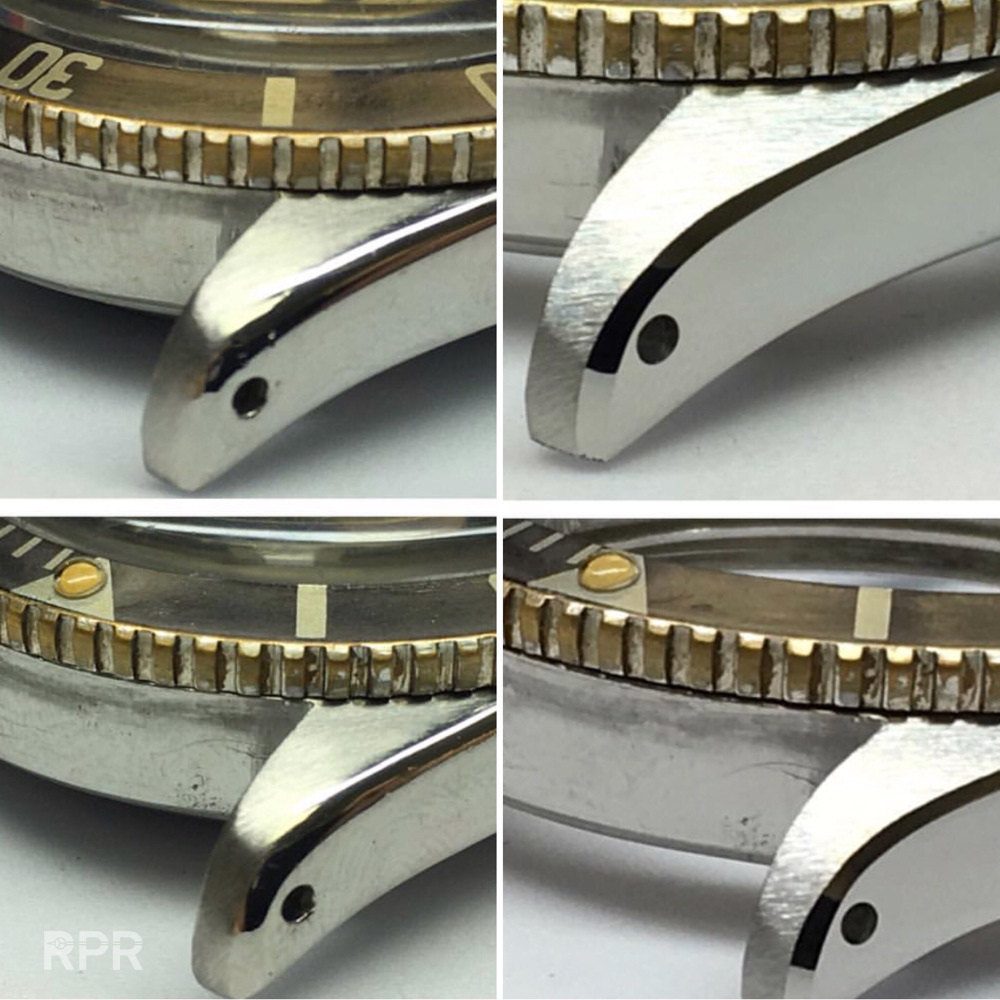
Example of a case restoration (source: www.rolexpassionreport.com)


Example of a case restoration through laser welding (source: www.classicwatchrepair.com)
In conclusion
In short, as watch lovers, our beef is not with polishing. It is with poor polishing. Looking for an un-polished watch is like looking for a needle in a haystack. There is no need to consider it a crime to freshen up a watch every now and then. Your favorite brand most likely doesn’t think it is either.
Our stance on the matter: un-polished watches are remarkable and collectible. We jump on them when we get the chance. If you are looking for a watch to wear, a well looked after example that has been polished makes a lot more sense. And since we work with highly skilled watchmakers, we feel confident a light refinish is the way to go for the vast majority of watch lovers. There is no technical necessity to stick with a previous owner’s wear, so long as it is superficial surface damage. And so no, polishing is not the work of the devil. Rather, it is a craft that requires high levels of skill and experience and its desireability should be evaluated on a case by case basis.


